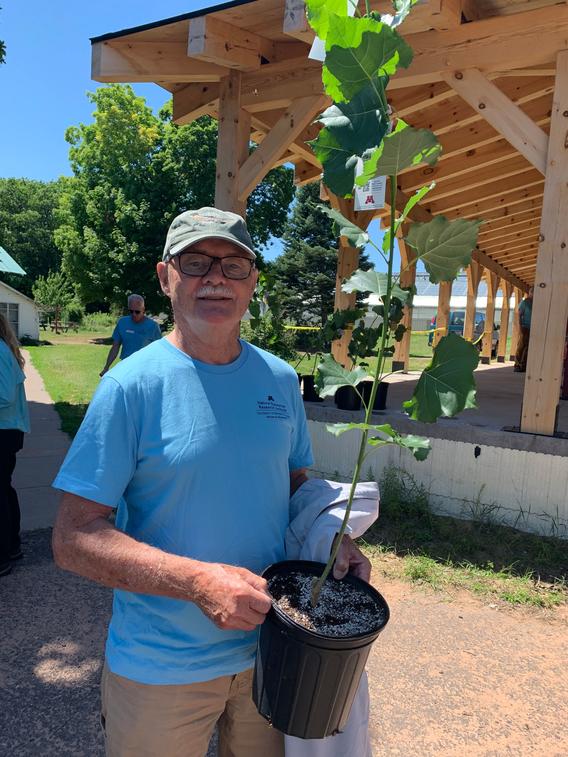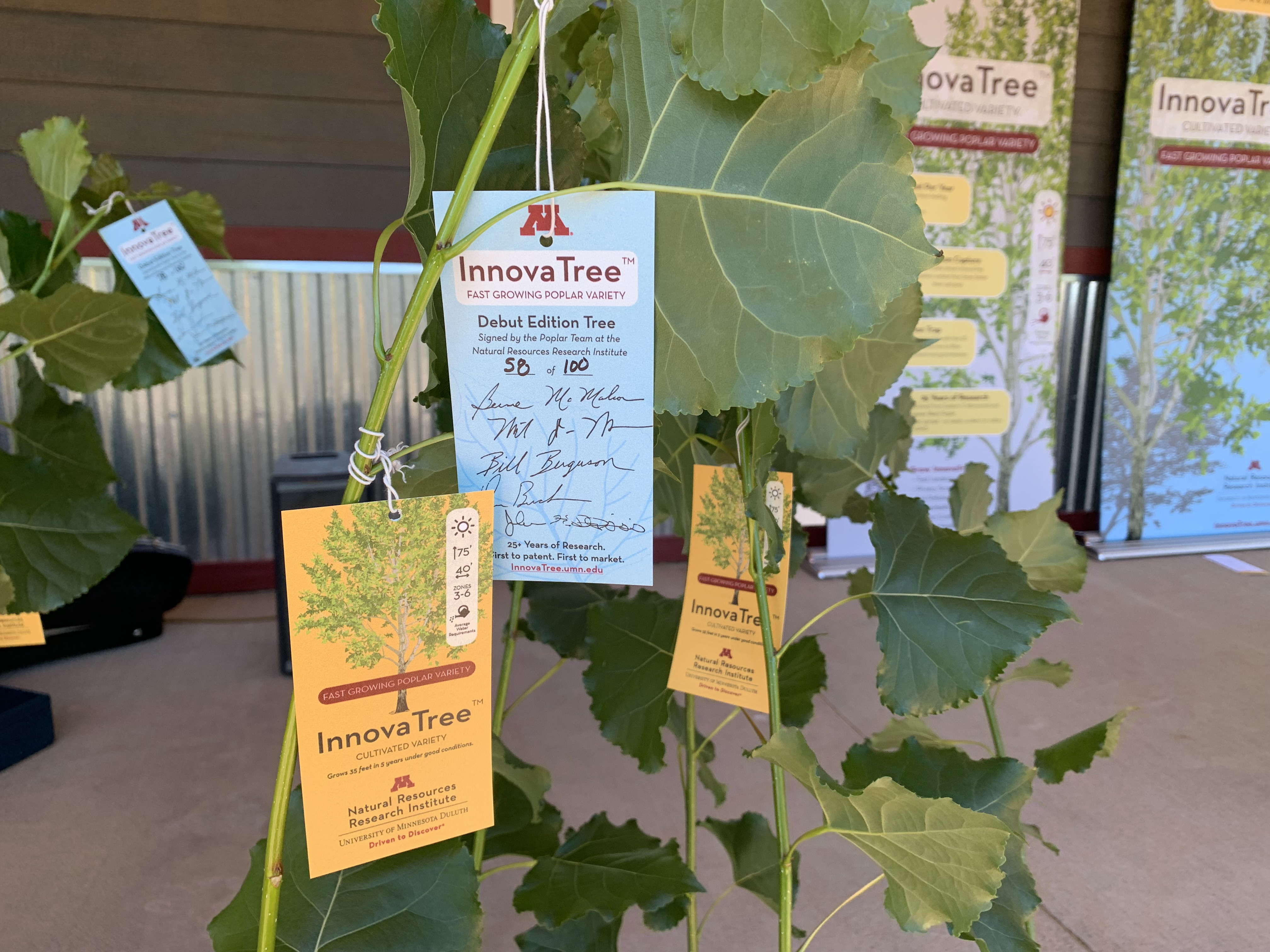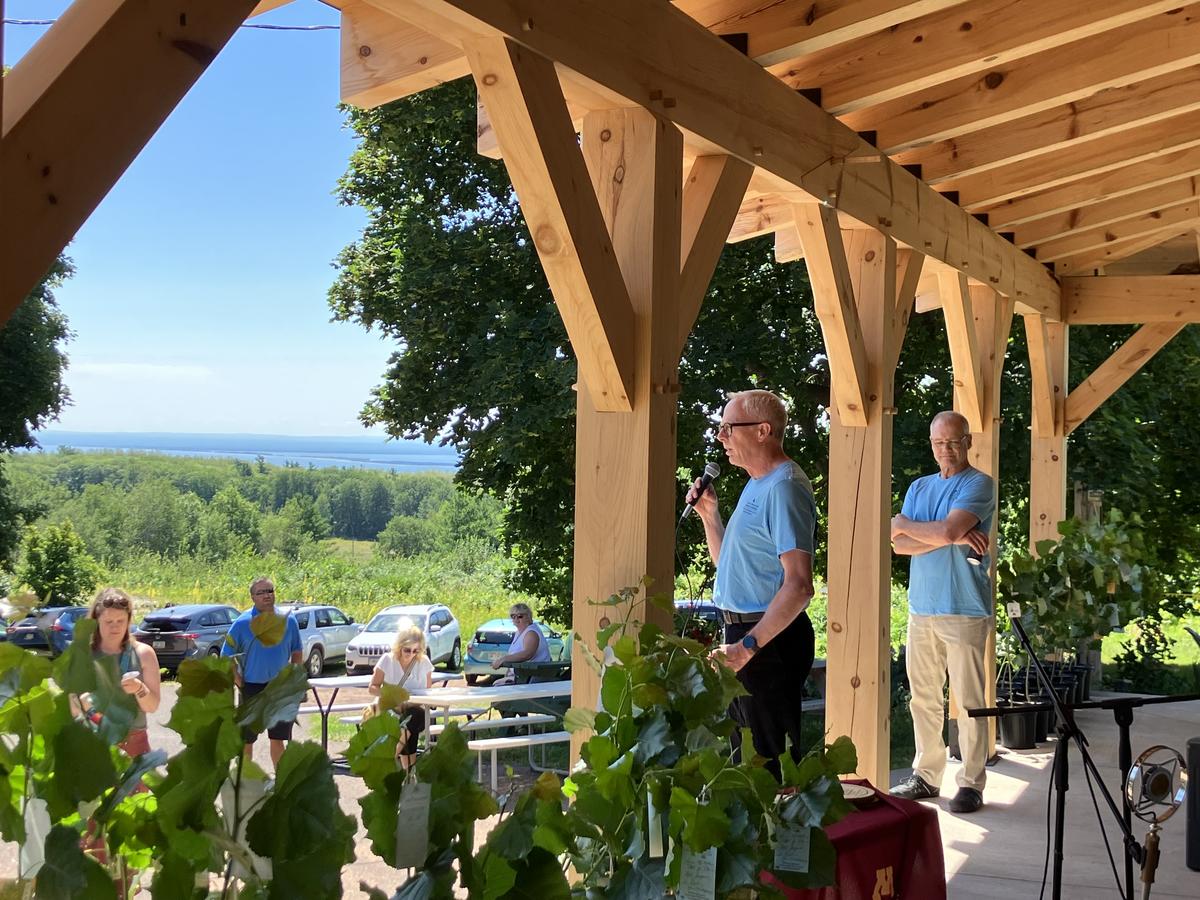Trees have been called the “lungs of the earth.” And it’s true, they do much for the environmental health of our planet.
And as the impacts of climate warming are felt globally, trees are needed more than ever – for shade, carbon capture, and oxygen. Now a new tree variety is available that does all the great things trees do, but much faster.
The InnovaTree™, developed by the Natural Resources Research Institute with a patent pending by the University of Minnesota, is available for purchase from Hauser’s Superior View Nursery in Bayfield, Wisconsin. It will be more more widely available next spring.

By volume, InnovaTree grows 64 percent faster than leading commercial hybrid poplar varieties. Under good conditions, it grows 5-8 feet per year, reaching up to 35 feet in less than 5 years. InnovaTree is NRRI’s first poplar variety on the market and one of many high-performing trees that the hybrid poplar team developed. Beyond a fast-growing landscaping tree for homeowners and conservation plantings, commercial uses include wood chips, pulp, lumber products, carbon sequestration and pollution remediation.
“Getting this research into the marketplace as a commercial product while solving real world problems is a decades-long goal realized,” said NRRI Executive Director Rolf Weberg. “It’s a showcase for many NRRI projects that are forward-thinking. We always want to be preparing for the economy of the future where all people, the planet and our economy can thrive.”
Celebration
An event to honor the breeding team who dedicated their careers to the development of this new tree variety – with more varieties to come – was held at the Hauser nursery on July 28. The team, now retired, include Bill Berguson, program director; Neil Nelson, program director; Dan Buchman, forestry specialist and, not in attendance, Bernie McMahon, tree breeder.
The patent-pending InnovaTree is the result of nearly three decades of cross pollination of native cottonwood (Populus deltoides) and European black poplar (Populus nigra).The combined traits increase both growth rate and disease resistance. It is currently sold at Hauser’s nursery and will expand to other nurseries next spring.
Research Underway
“This is a tree of many uses,” said Jeff Jackson, UMN Extension Educator. “For consumers today it makes a great privacy screen and landscaping tree. NRRI is also working on future uses for it, including phytoremediation, biobased materials and urban reforestation.”

NRRI’s breeding program, managed by John Du Plissis, Forest and Land Research Group Leader, currently has over 500 varieties archived in a nursery germplasm bank from 1,672 varieties and 115 families in 27 field tests at nine sites in Minnesota, as well as several trials in in north america and around the world through agency and university cooperators.
“To our knowledge, this collection is among the largest in the United States, and perhaps the world,” said Du Plissis. “It represents a unique and invaluable resource to allow further genetic improvement and development of new markets in an emerging bioeconomy.”
These trees are being evaluated for research and commercial applications in the U.S., Canada, and Europe. Research underway includes:
- testing as a phytoremediation tool for removing harmful chemicals and heavy metals from soils and water in a partnership with the U.S. Forest Service’s Northern Research Station. Another test of phytoremediation potential is underway in Canada with four poplar varieties.
- testing of 42 of the NRRI varieties by a commercial wood manufacturer in Europe. The goal of this project is to test InnovaTree for oriented strandboard production to reduce the product price.
Since its start in 1996, the program has been supported by the Department of Energy Sun Grant Regional Biomass Feedstock Development Program, DOE Idaho National Laboratory, USDA National Institute of Food and Agriculture, the State of Minnesota, the Laurentian Energy Authority, and the forest industry.
More information can be found at innovatree.umn.edu.
